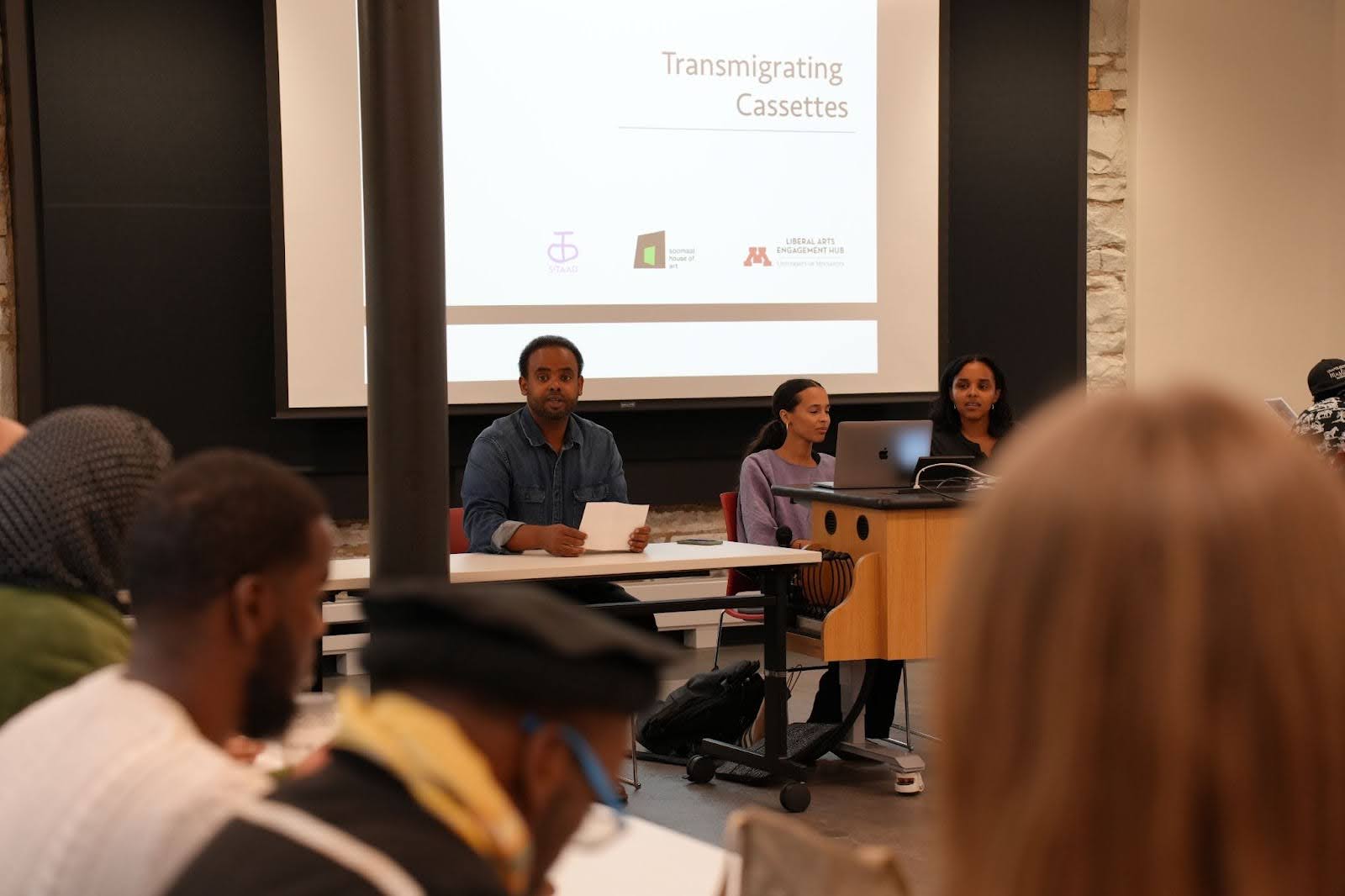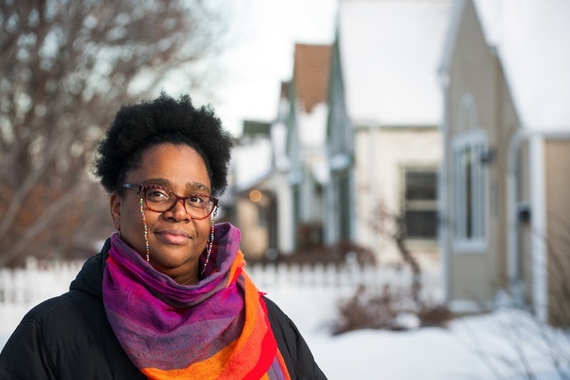Bringing Community Together Through Visual Art
Grounded in the communal effort, Soomaal House of Art is a place where emerging Somali artists can find community, creative freedom, and opportunity as they work together to bring light to their Somali culture and heritage.
Creating Soomaal House of Art
Soomaal House of Art began in 2014 with a mission to address the critical void of visual culture and art opportunities for the Somali community. Now, with the opportunities and residency space provided by the Liberal Arts Engagement Hub (The Hub) in the College of Liberal Arts, Soomaal House of Art can further act on that goal.
“A lot of times, we’d come across non-Somalis depicting our narratives, and there were no opportunities for our youth in the arts,” says co-founder Kaamil A. Haider. Soomaal House aims to change that. Founded by three individuals with creative backgrounds—Khadijah Muse, Mohamud Mumin, and Kaamil A. Haider—Soomaal House is the culmination of their efforts to provide a platform for Somali artists and create a connective community for career opportunities and a safe space.
On the Come Up For Art and Community
When asked why they focus on visual art, Haider says, “Other art forms are present and have some kind of standing…but the visual culture is something we really lacked. We lacked the representation for self-expression and storytelling. We thought about how to put together these art forms and bring them to the foreground for our community.”
Hundreds of Somali Minnesotans convey their self and culture through visual art. By creating a platform to showcase that art, Soomaal House is giving artists a place and spotlight, as well as the chance to show their Minnesota heritage. So far, Soomaal House has held various art exhibitions, community dialogues, and collaborations with diverse artists at the local, national, and international levels. They have artist and resident programs to spark creative license and provide networks for up-and-coming artists, and they also work with schools to create mentorship programs. These are all ways to create opportunities for people who are starting to think about becoming artists.
But it doesn’t stop there. “We wanted to connect with artists to expand the course of Somali visual art and understand the hyphenated identities amongst us,” Haider says. Whether Somali-American, Somali-British, or any other hyphenated identity, the question Soomaal House asks is how they can continue engaging with all of these identities and histories. That is where their archive was born.

The Archive
The past always comes into place during discussions about identity. But how do you answer the question of history in a way that helps a burgeoning artist grow?
That is where their Soomaal House Library & Archive Center comes into place. Soomaal House started developing this center so they could digitally and physically document their past and contemporary histories and artworks, and archive their Minnesota community experiences. The sacred spaces, the community growth, all of it. They have built fellowships to invite Somali artists, archivists, and researchers to “activate” the archives by either bringing something they’re already working on and using the archives as a building block, or finding something on their own in those archives. “It is one thing to have the archives, and another completely to activate them and have discussions about what was discovered,” says Haider.
“It’s tied to relationship building,” says Haider. “And finding out what the artist is looking for, what knowledge they seek, what community they hope to find themselves in, and how to develop their artistic practice.” With the knowledge of the archive, and the network of artists they continue to grow and work with, they are able to find places to connect these artists so they can hone their skills more.
At the end of the day, it is about enlarging the community and enlarging their understanding of the histories they’ve managed to find and preserve.
Teaming up with SITAAD and The Hub
This year, Soomaal House, in partnership with the Immigration History Research Center Archives, has teamed up with SITAAD—an initiative created by archivists Leyla Degan and Naima Hassan, dedicated to creative collective action and awareness of colonial history.
Their project, Transmigrating Cassettes, uses cassette tapes as a medium to share their research on “dispersed colonial collections,” as explained on their website. The first series captures the photos and story of a Somali ethnographic performing troupe arriving from French Somaliland to Ellis Island Immigration Station in 1914. These photos were taken by Augustus F. Sherman, an Ellis Island cleric. Across the United States are archives of the troupe’s story including their arrival, performances, detainment, and eventual deportation. By collecting these archives, and with the collaboration of Soomaal House of Art, SITAAD plans to make these cassettes available through closed circulations within communities and engage the public by hosting workshops and symbolic gatherings. They aim to bring together communities to talk about ways of dealing with the present and past. Through the Hub residency, they gain the audience necessary to share their project and the space to develop it.

What now?
With the momentum they have gained by partnering with SITAAD and The Hub, Soomaal House aims to continue their work and keep making connections with more people. Soomaal House grounds themselves in communal efforts—they don’t extract works from other people. They work to make any creation fruitful on a personal and community level. Building bonds over time and finding other ways to speak on so many of the silenced histories of the past, Soomaal House aims to contextualize both the histories of the past and present.
By stepping away from speaking for them, and instead creating opportunities for them to speak for themselves, Soomaal House will create a practice where communities can uplift one another and themselves without the harm of appropriation.
And with each person they bring into their community, they will widen their scope to network, to mentor, and to reveal more about their histories and community than ever before.
The Liberal Arts Engagement Hub
Soomaal House Archive Fellowship is one of eight Hub Residencies for the 2023-2024 academic year. The Liberal Arts Engagement Hub seeks to facilitate reciprocal and trusting partnerships between humanistic scholars in the arts, humanities, and social sciences and the community to respond to important social challenges.
This story was written by an undergraduate student in CLA.



